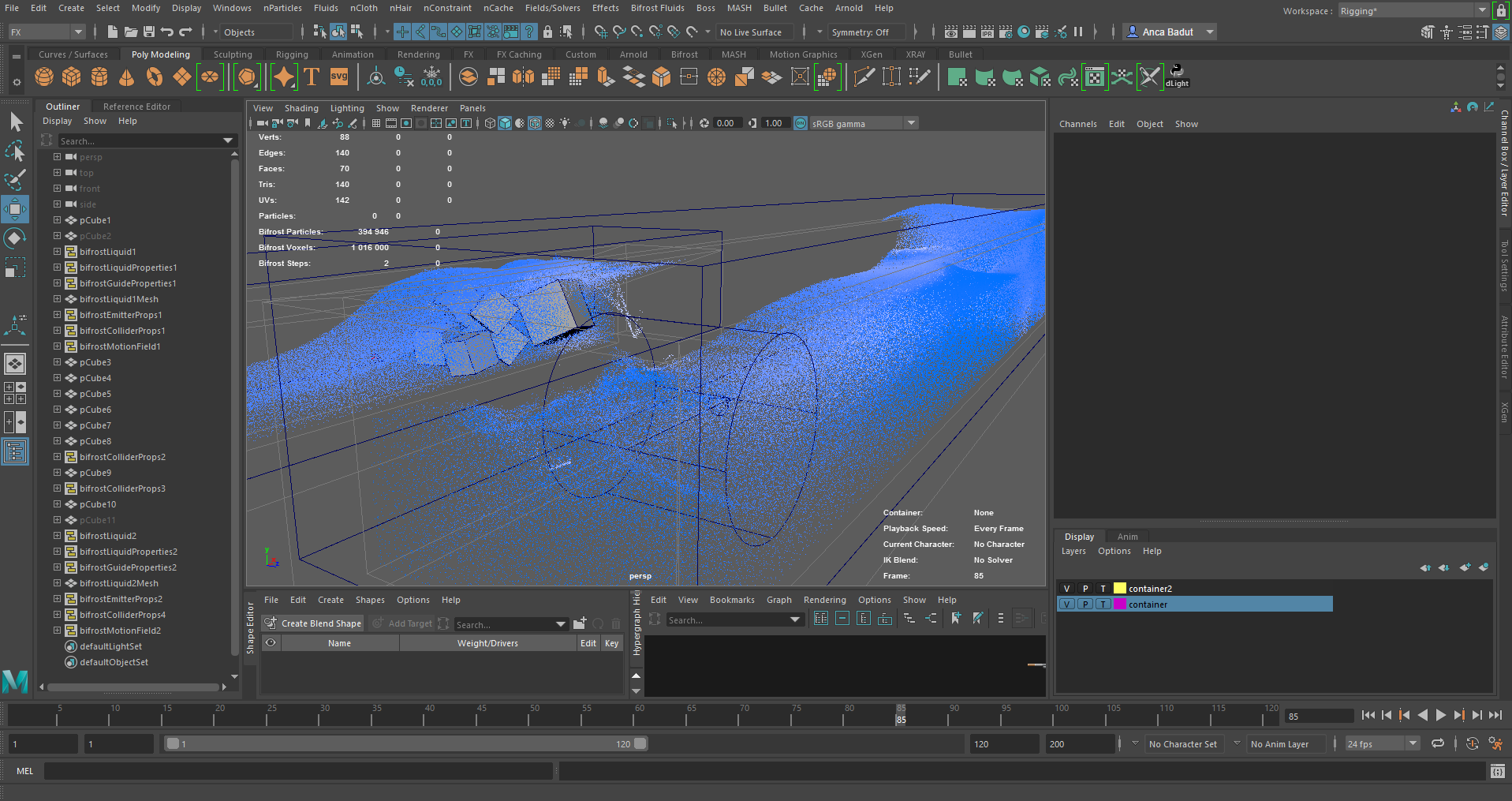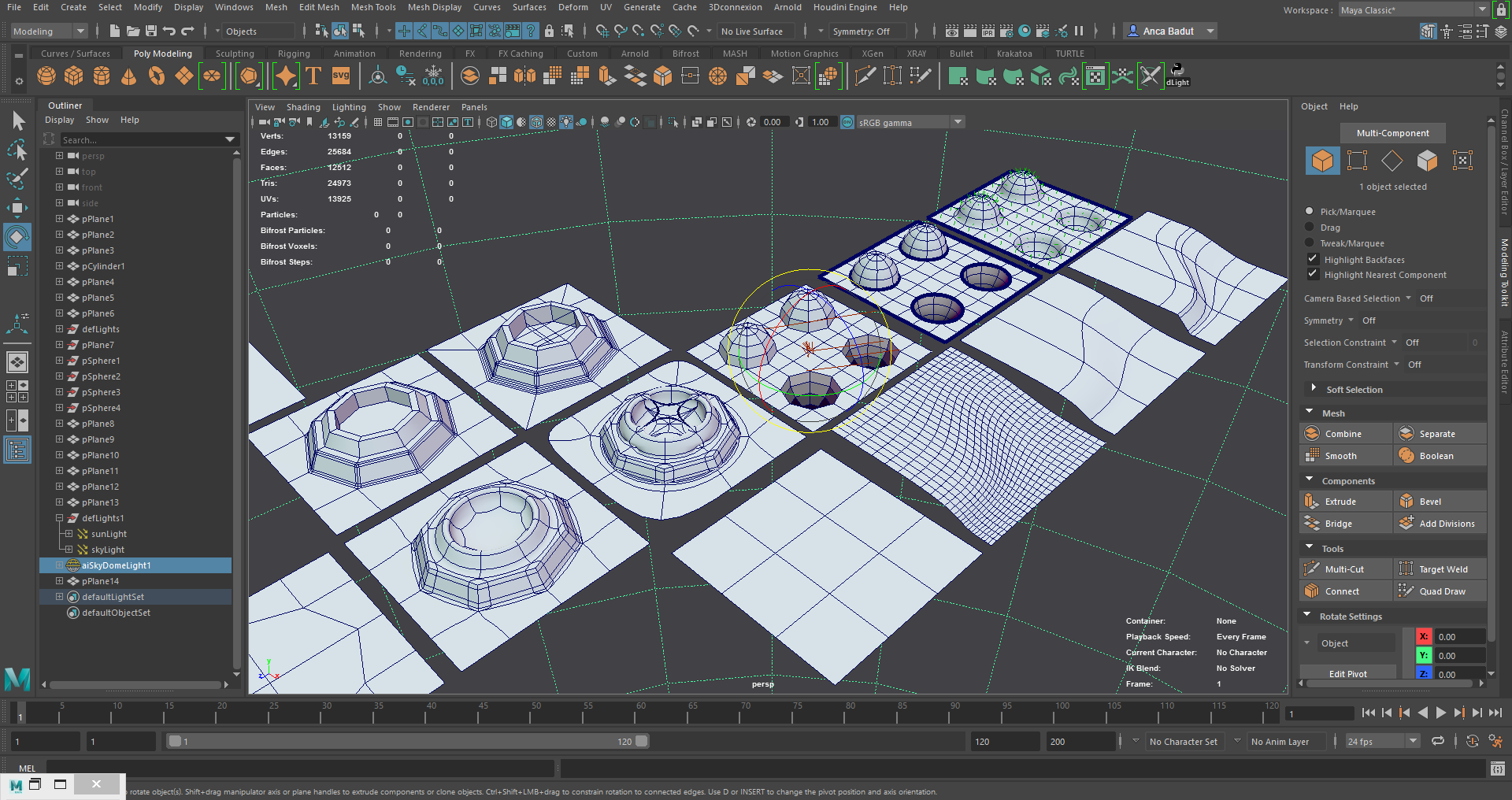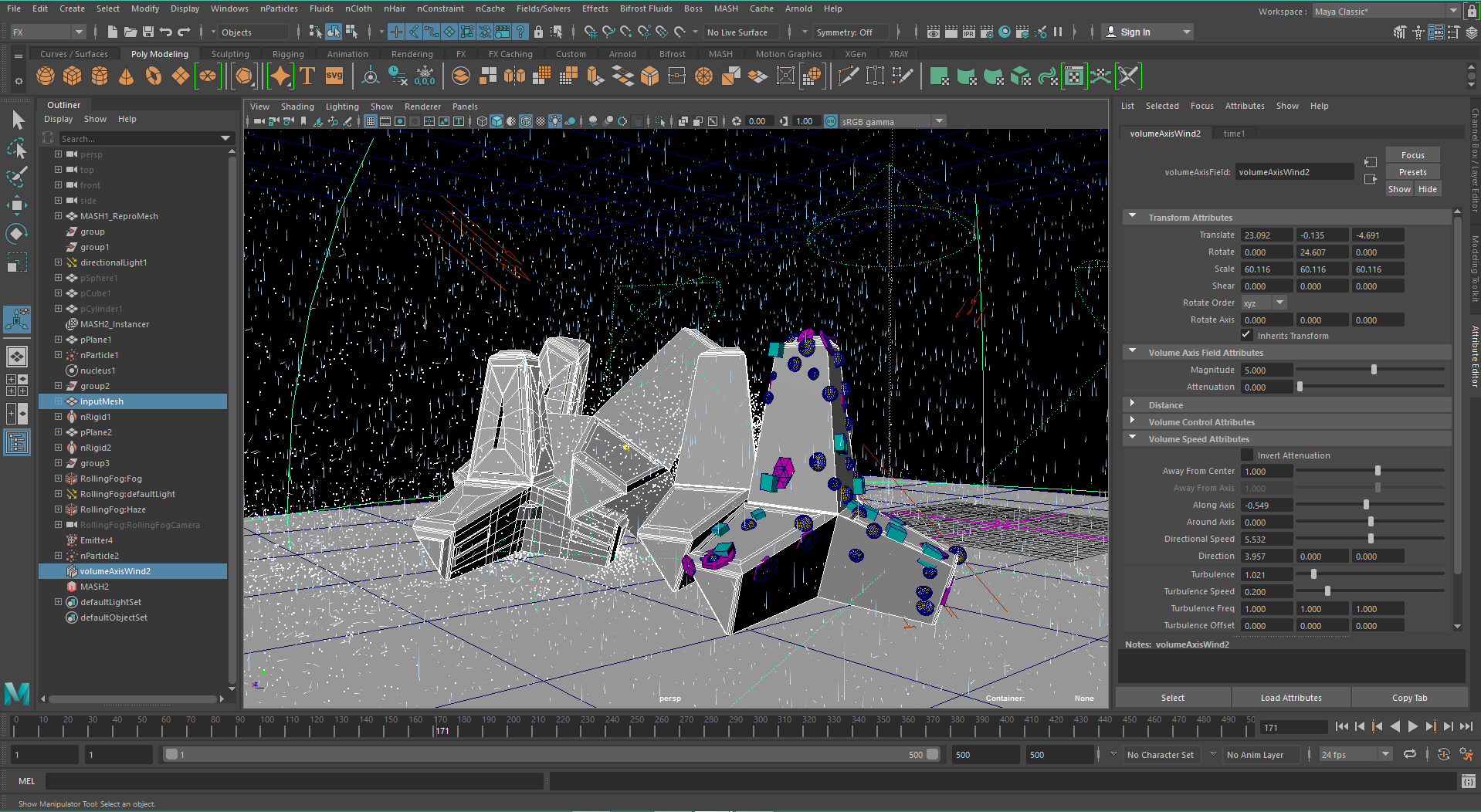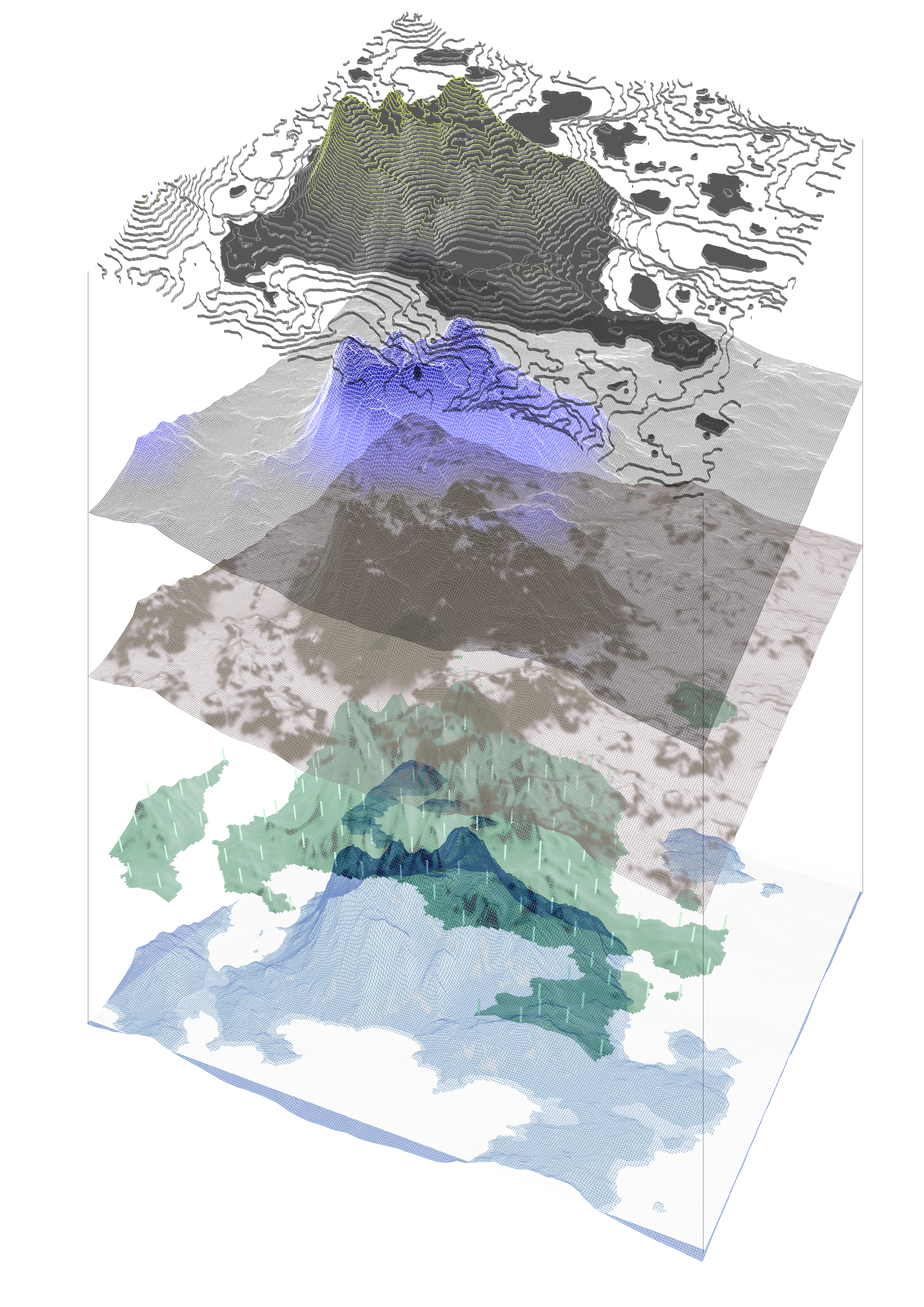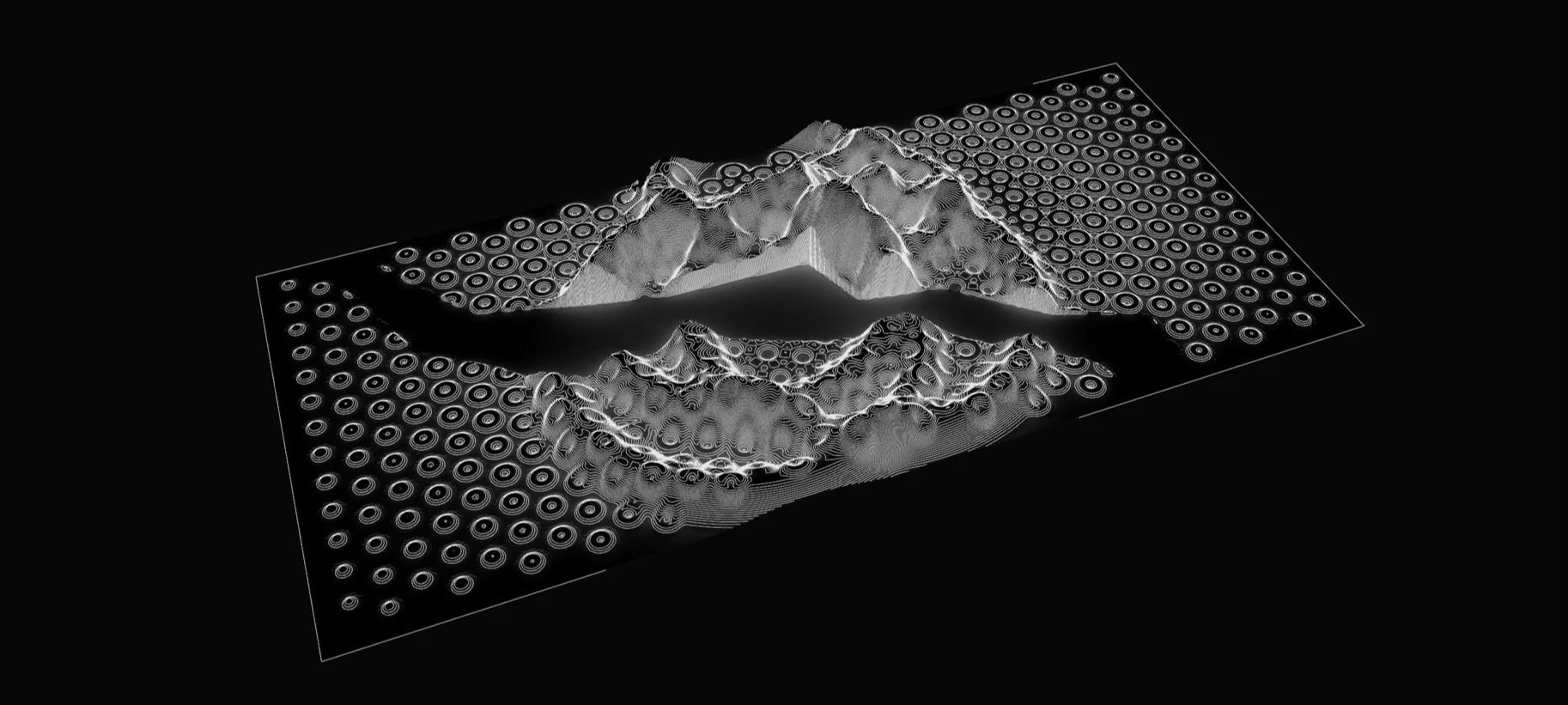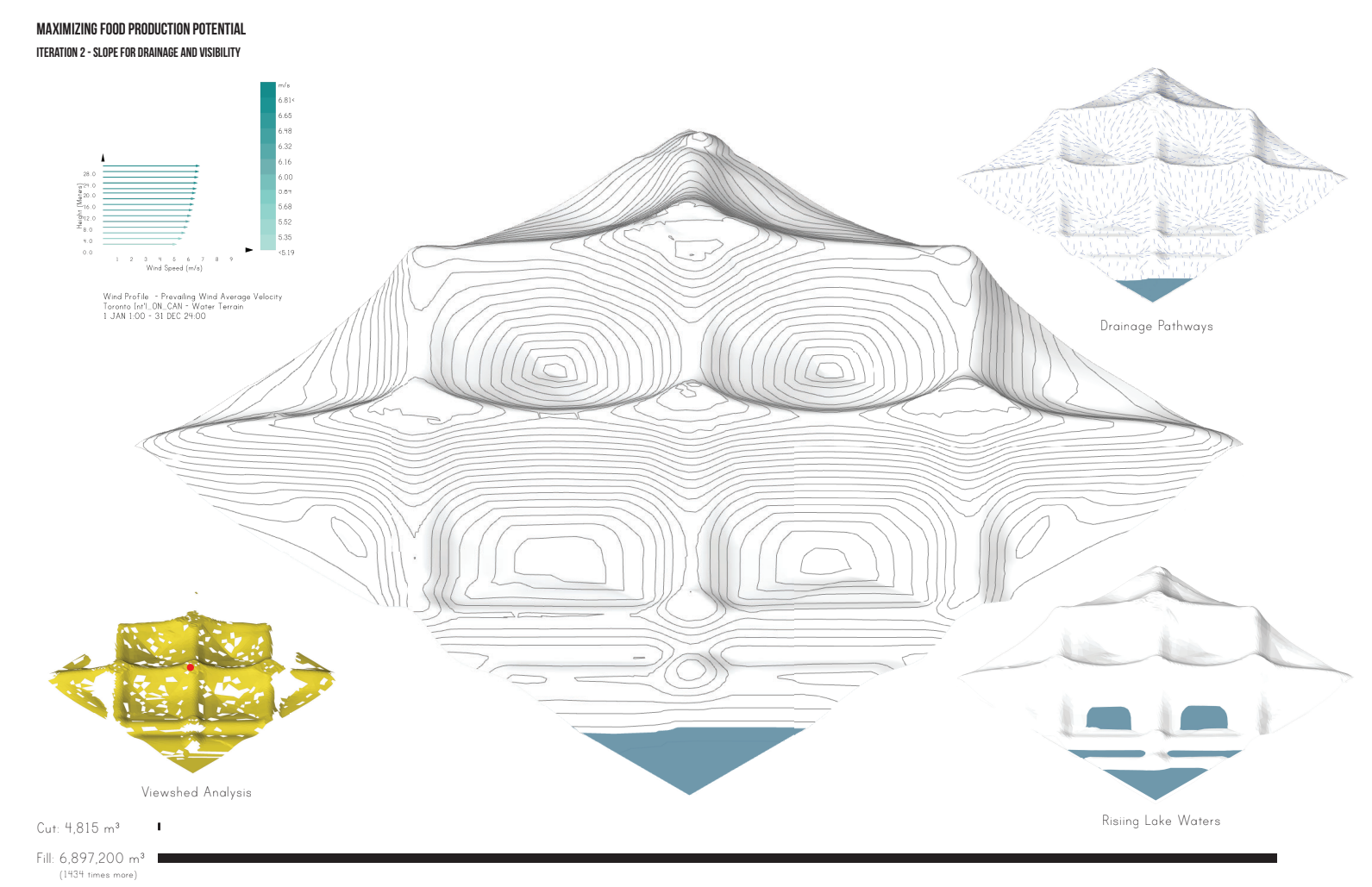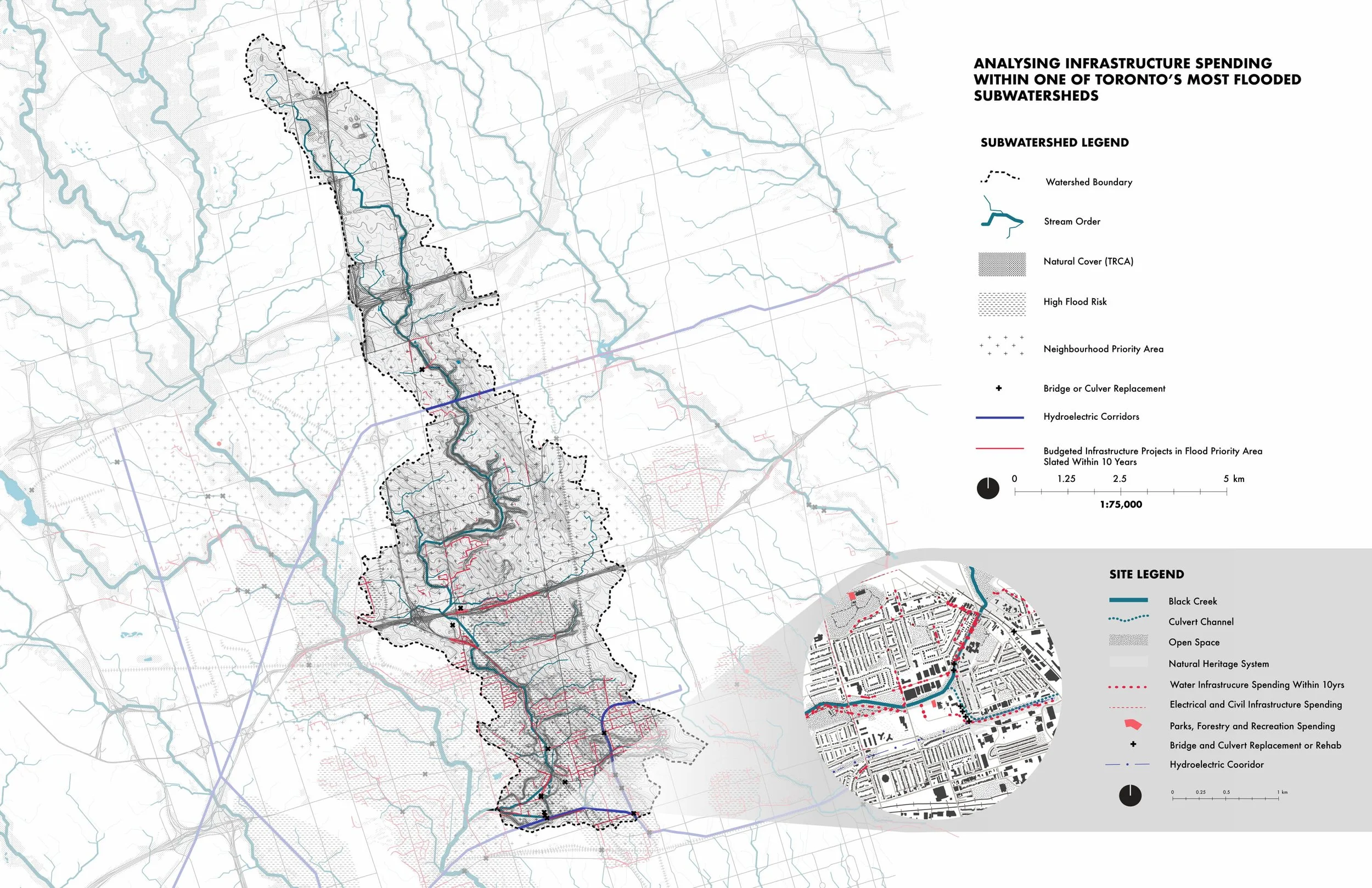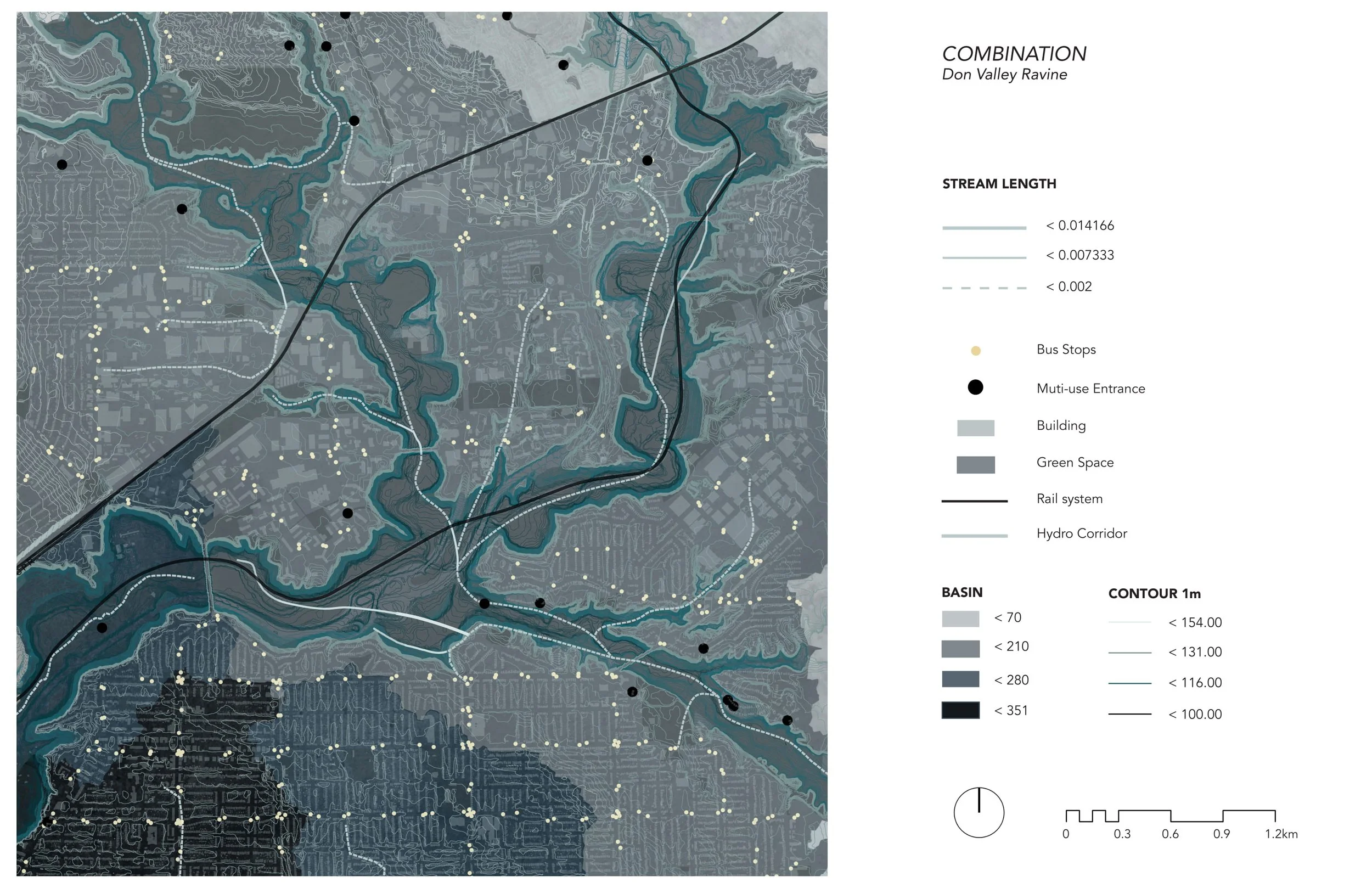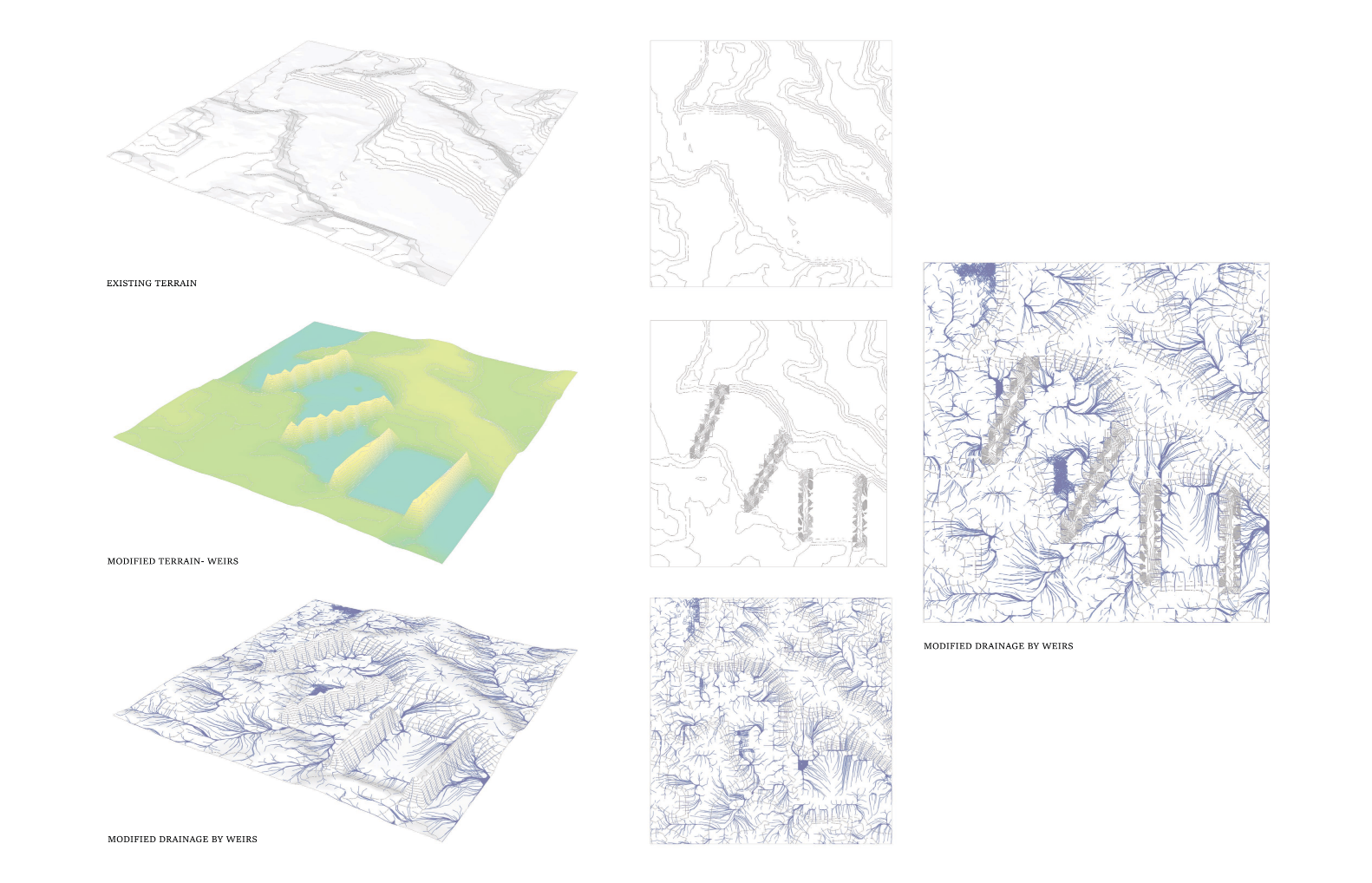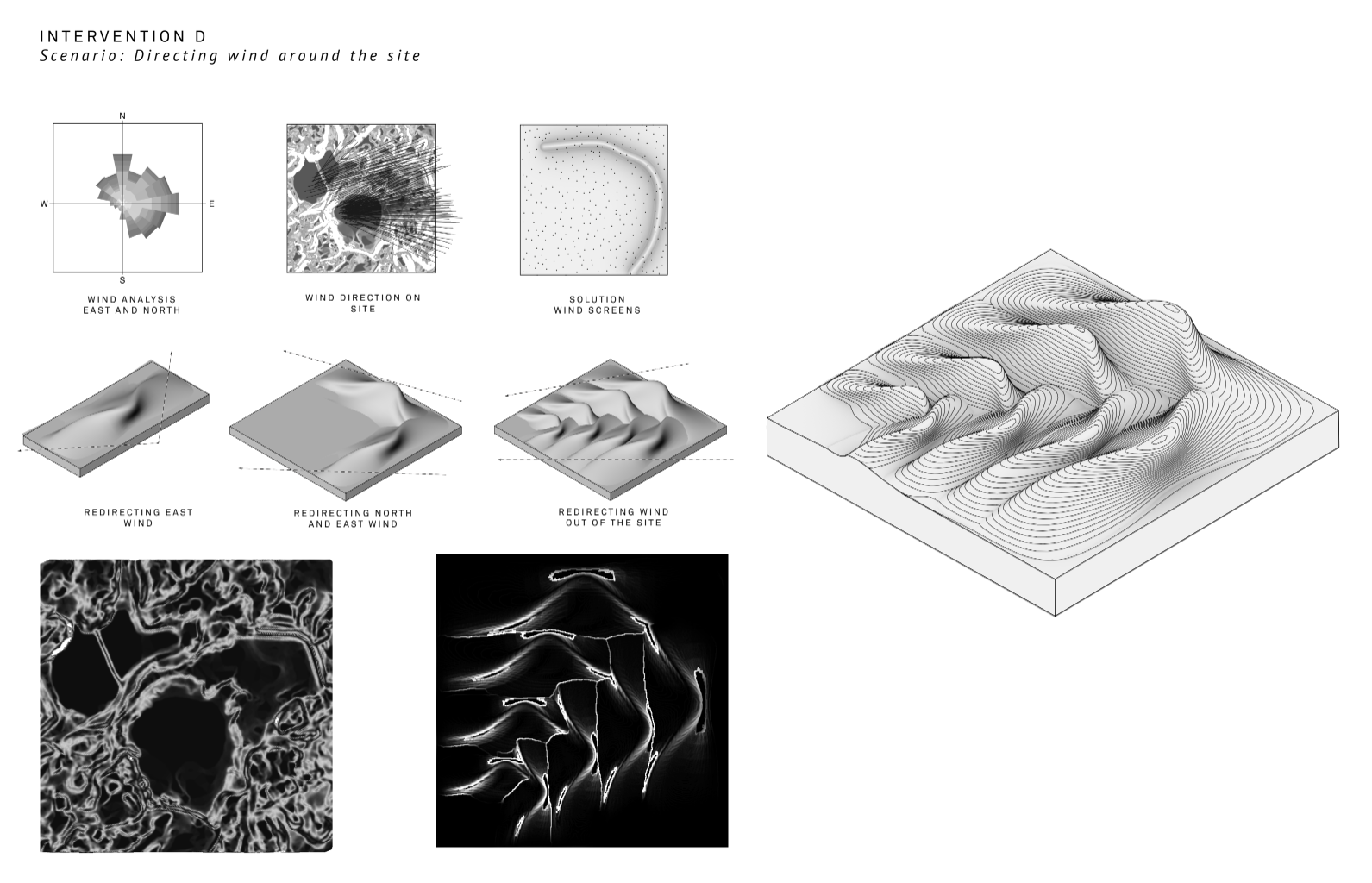Intermediate and Advanced Visual Communication in Landscape Architecture (2017-2019)
As a research assistant under the guidance of head tutor Matthew Spremulli in the professional Master of Landscape Architecture program at the University of Toronto, I gained meaningful experience in complex systems interaction, simulation, and innovative visualization to support students in addressing landscape design challenges in their projects.
In 2017, four modules of digital terrain modeling were presented, each with specific goals, concepts, software, and analysis techniques. Module A focused on a feedback-loop workflow for digital terrain modeling, Module B introduced alternative modeling-analysis platforms, Module C explored terrain modeling and mesh-terrain analysis, and Module D taught game engines, virtual reality, and animations for world-building and scenario modeling.
Form finding, digital terrain modeling/sculpting using World Machine and Maya, together with visually communicating drainage paths with recursion and weather data have been some of the main topics of my research.
Our Advanced Visual Communication course in 2018 explored new digital design-research methods and representation strategies and was structured around three modules, Analysis & Adaptation, Scenario Building & Behavior, and Sculpting & Simulation. The aim of this course has been to foster a sense of research representation and for students to build a body of work based on their emerging thesis interests.
All courses included classes, lectures, short seminars, technical tutorials, workshops, guest speakers, and an experiment.
As part of my research, I have written documentations for students on the topic of Maya simulations for landscape visual analysis, including particle phenomena in nature, dynamic properties of water, snow, sand, and dust, and VFX simulations. My work has also focused on addressing technical challenges related to simulating large-scale natural effects in Autodesk Maya, as well as exploring different methods of analysis such as simulation with particle systems and volume-based fluid dynamics.
Below are screenshots from my research on the topic.
